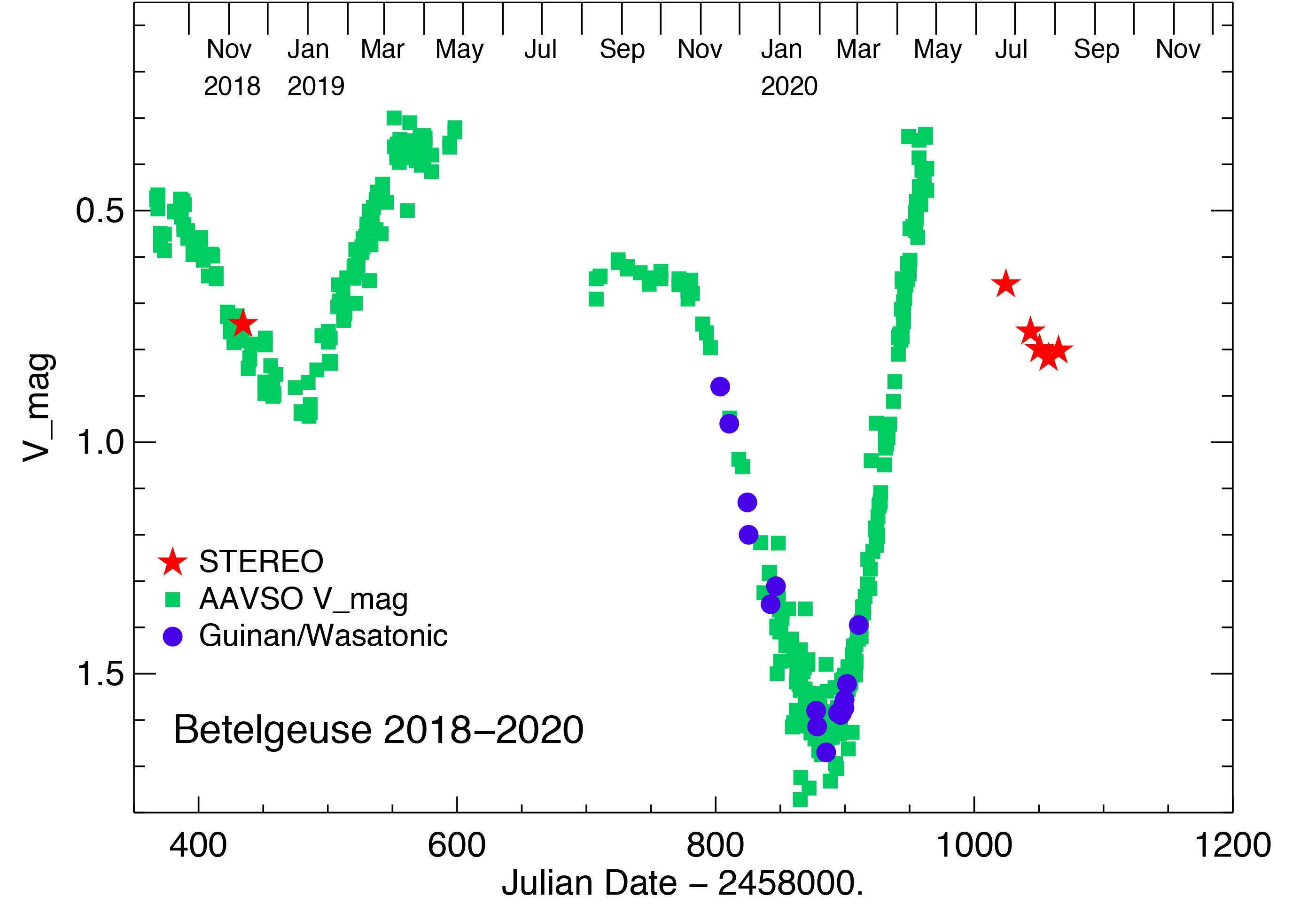For several weeks STEREO had the solar system's best view of star Betelgeuse, whose extreme dimming over the past several months has intrigued scientists. STEREO's measurements revealed more unexpected dimming by the star, further adding to the questions around Betelgeuse's recent behaviour.
Professor Richard Harrison, Chief Scientist at RAL Space, is Principal Investigator for the Heliospheric Imager (HI) which has been the only instrument on board STEREO able to image Betelgeuse. The instrument is designed to observe the region of interplanetary space between the Sun and 1 AU, to track coronal mass ejections.
“Betelgeuse is a familiar sight in the winter as the bright orange-red star in Orion, but it has been displaying strange behaviour that is suggesting to some that this old red giant star is entering a new late-phase of its life" said Professor Harrison. “Betelgeuse is not visible from Earth between May and August, because it is so close to the Sun in the sky, but it can be seen from the STEREO spacecraft."
Starting in late spring 2020, Betelgeuse has appeared close to the Sun in the sky because of Earth's position in space. However, the STEREO spacecraft is currently about 70 degrees away from Earth — meaning that in late June, STEREO was in approximately the same position that Earth was in around mid-April, and could see the stars that appeared in Earth's night sky in April.
Scientists took advantage of this unique orbital position to keep tabs on Betelgeuse while the star was invisible to Earth-bound observatories. The HI instrument observed Betelgeuse on five separate days in July and August. The spacecraft was rolled for about two hours each time to place Betelgeuse in the field of view of the HI. The team shortened the instrument's exposure time to account for Betelgeuse's relative brightness compared to the solar wind. The instrument's wide field of view covers about 70 degrees of sky, which allowed scientists to calibrate their measurements using steady stars in the night sky across several weeks.
Professor Richard Harrison, added, “ Our HI instrument is designed to image solar plasma clouds passing through the solar system but it is great to be able to respond to the astronomers to make observations of Betelgeuse when others cannot see it. It is a testament to the skill of the HI team at RAL Space that the performance of the instrument and its exceptional calibration were able to deliver exactly the observations needed."
STEREO's measurements revealed that Betelgeuse is dimming again — an unexpected development so soon after its last dim period. Betelgeuse typically goes through brightness cycles lasting about 420 days, with the previous minimum in February 2020, meaning this dimming is happening unexpectedly early. These observations were reported by the science team via The Astronomer's Telegram on July 28, 2020. This is an intriguing phenomenon that scientists will study with additional Earth-orbiting and ground-based observatories when Betelgeuse returns to the night sky in late August.

This figure shows measurements of Betelgeuse's brightness from different observatories from late 2018 to present. The blue and green points represent data from ground-based observatories. The gaps in these measurements happen when Betelgeuse appears in Earth's day sky, making it impossible to take precise brightness measurements. During this observation gap in 2020, NASA's STEREO spacecraft - with measurements shown in red - stepped in to observe Betelgeuse from its unique vantage point, revealing unexpected dimming by the star. The 2018 data point from STEREO was found in the mission's archival data and was used to calibrate STEREO's measurements against other telescopes. Credit: Dupree, et al.
